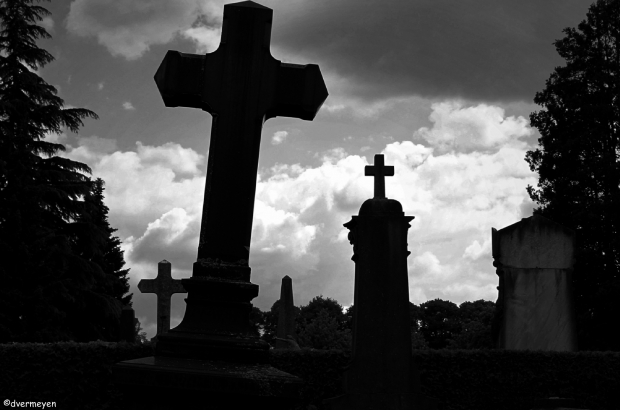- Daily & Weekly newsletters
- Buy & download The Bulletin
- Comment on our articles
Cemetery photography: the Belgian Instagrammer finding beauty in decay
Instagram is all about sharing what you think is pretty - it could be yourself, your breakfast, your dog or a landscape. But there are Instagrammers who do not really care for all that. To them, pretty equals gloomy, decaying and perishable. Instead of colourful pictures basking in the sunlight, they prefer capturing shadowy silhouettes in a cold mist. They look for tombstones and graves. For Instagram taphophiles, the true beauty lies at cemeteries.
“They have a musing, poetic atmosphere,” says Daniel Vermeyen whose Instagram account is one of the most followed in Belgium when it comes to cemetery photography. “There is nothing deathly about cemeteries. They let you reflect on the nuance between perishability and suddenly not being there any more.”
Vermeyen, a 57-year-old web designer from Berchem, Antwerp, started photographing cemeteries in 1991. In his work, which has featured in several local exhibitions, he aims to approach physical life’s end in a positive and respectful way.
“I look for very old or abandoned graves that have a history,” he says. “It's the decay of graves and mausoleums that interests me. I like the Schoonselhof cemetery in Antwerp, Sint-Fredegandus in Deurne, Silsburg cemetery in Borgerhout, Timuli cemetery in Tienen. And the old cemeteries of Bruges, Laeken and Ghent.”
Finding the right place, however, is not enough. Weather matters greatly to some cemetery photographers. “I never go to a cemetery when it's sunny outside,” says Vermeyen. “I always wait for cloudy days. Autumn and winter are my two favourite seasons to visit cemeteries. I also visit the same cemetery more than once because there is always something that I missed before.”

In 2017, Vermeyen joined Instagram after a friend told him about the social network’s taphophile subculture. “I found out there are some very cool taphophile Instagram hubs that feature your photographs if they like them,” he says. “By getting featured, lots of people have the chance to see your photographs and you build up your friends list.” Photographers become members of such hubs by getting featured and also by supporting and appreciating other photographers.
Although cemetery photography is hardly a mainstream hobby, the main hubs – including @aj_graveyards, @project_necropolis, @gallery_of_dark_arts or @entropy_to_epitaphs - exceed 10,000 followers. Featured photographs can come from people that solely focus on cemeteries, from urbex photographers (such as Belgium’s @joellecobblestone) or from normal day-to-day accounts.
As Vermeyen points out, being a hub member means your cemetery knowledge gets put in a worldwide context. “For me it’s a shame that we don't have more skulls and bones depicted in Belgian cemeteries,” he says. “I see such things a lot on the Instagram hubs and on photographs from my online taphophile friends but you don't easily find them in Belgium.”

The same could be said about cemetery photographers. When asked about other Belgian taphophile Instagrammers, Vermeyen shrugs – he does not know any. His hobby is exceptional.
“Not many people think of visiting cemeteries,” says Benoît Kervyn de Volkaersbeke, religious heritage consultant of Bruges’ municipal museums. The central cemetery in Bruges is probably the oldest in Belgium. Yet, out of the millions of tourists who pour into the Venice of the North every year, only a few are interested in funerary heritage.
“But once people take a guided tour in a cemetery for the first time, they are very excited,” says Kervyn. “Cemeteries are a part of our history and heritage after all.” Maybe the cemeteries only need more Instagrammers to show them in their best light.
Photos courtesy Daniel Vermeyen









